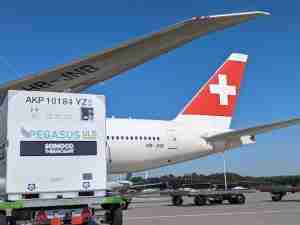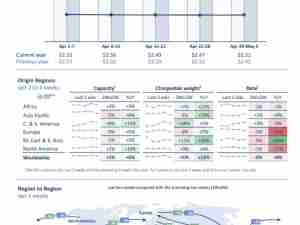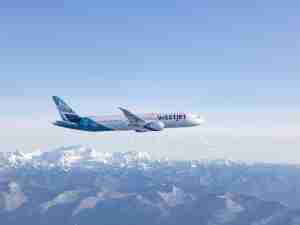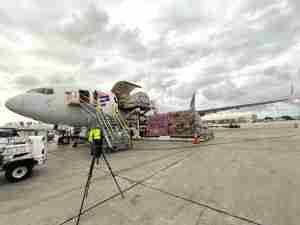Korean Air Lines Co. is considering letting go of its fleet of 10 Airbus SE A220 jets, according to people familiar with the matter, as the carrier seeks to streamline the types of aircraft it operates ahead of a merger with Asiana Airlines Inc.
Seoul-based Korean Air ordered the models back in 2011 and they’re one of the oldest styles of A220 jets currently plying the skies. No final decision has been taken and the airline could still ultimately choose to retain the planes, the people said, asking not to be identified because the discussions are private.
A Korean Air spokesperson said via text message that the carrier hasn’t confirmed whether it will exit its Airbus A220 fleet. A representative from Airbus declined to comment.
Getting rid of its small fleet of A220s would allow Korean Air to simplify the many types of aircraft it operates across the Boeing Co. and Airbus model lineup.
That simplification push is becoming more crucial as it prepares to merge with fellow South Korean carrier Asiana. Korean Air’s 1.8 trillion won ($1.3 billion) bid for its smaller rival won approval earlier this month from the European Union, moving the deal a step closer to reality after the firms offered to address concerns raised over competition.
Korean Air was an early operator of the model that was originally introduced by Bombardier Inc. and was at the time called the C-Series. Airbus later took over the program in 2018 and renamed it the A220, in line with its other models.
Fuel efficient and lightweight, the A220 is powered by Pratt & Whitney’s geared turbofan engines, which have struggled with shorter-than-expected time on the wing and more recently, potentially flawed components that require inspections.
On Feb 1., lessor Azorra Aviation Holdings LLC bought Egyptair’s fleet of a dozen A220-300s as the North African carrier opted to exit the jets in favor of Airbus’s widebody aircraft.
Korean Air in October last year said it would spend 4.1 trillion won purchasing 20 additional Airbus A321neo aircraft between November 2023 and December 2030, according to a regulatory filing. It said the top-up order was part of its ongoing fleet modernization plans.












